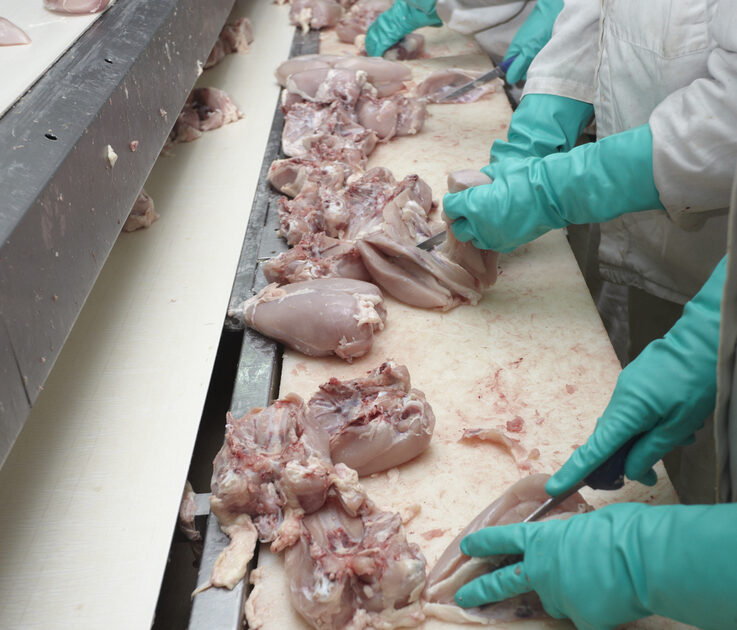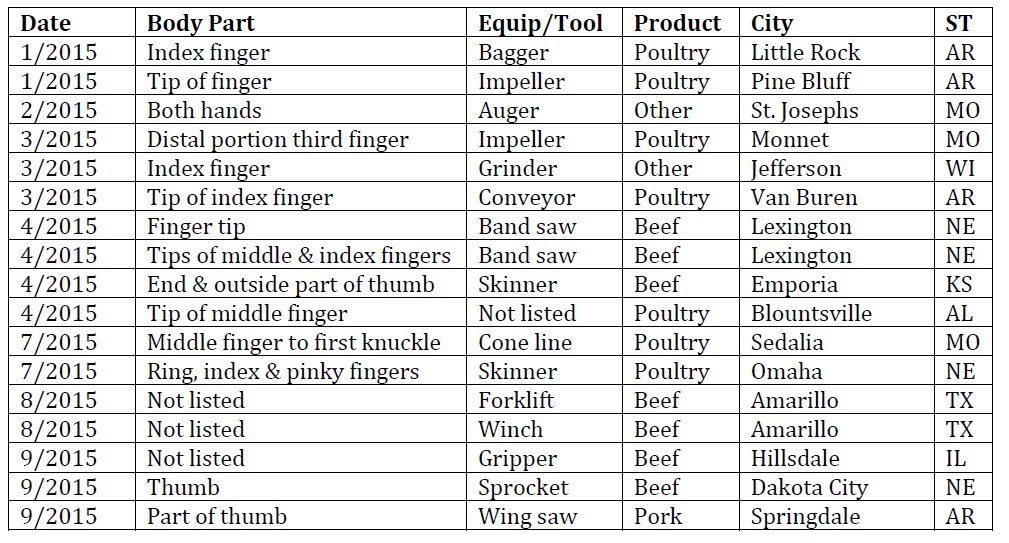Slaughterhouse Hazards at Tyson Foods: More than 1 Amputation a Month, OSHA Data Reveals

Tyson Foods may have committed to antibiotic-free chicken hatcheries, but there may be something even more alarming in its chicken, beef, and pork products sold in the U.S.: human flesh.
According to OSHA data acquired by Celeste Monforton, DrPH, MPH of Milken Institute School of Public Health, George Washington University, there were at least 17 reported worker amputations—more than one per month–among Tyson’s more than 400 U.S. facilities in 2015. Most of the amputations happen on the processing line and include parts of or entire fingers. In one case an employee lost both hands.
“Skinners. Band saws. Wing saws. Hide grippers. The names of these tools tell just part of the story of why these amputations occurred,” writes Monforton on ScienceBlogs. “Their names, however, provide more than an inkling about the physical demands of these jobs.”
Working in slaughterhouses, animal processing plants, and factory farms are among the riskiest jobs in the U.S. Not only are many of the employees poorly paid illegal immigrants—nearly 40 percent weren’t born in the U.S.–but they’re often exhausted, working long or double-shifts on lines that move incredibly fast. And there’s no job security, either, especially for undocumented workers.

“Most workers are ‘at-will’ employees, meaning they can be easily fired at a supervisor’s discretion,” reports the Food Empowerment Project. “The threat of termination discourages workers from reporting safety concerns, injuries, or other serious issues. Supervisors use a variety of intimidation tactics to suppress workers’ concerns and make it clear that other people are always available to replace them. As a result, workers are conditioned to accept a hazardous and demeaning work environment if they want to remain employed.”
The data obtained by Monforton is just the (severed finger) tip of the iceberg. Effective January 1, 2015, new OSHA regulations require employers to report injuries within 24 hours that caused amputation or required hospitalization. And she notes that in states that run their own OSHA programs–1o of which are home to Tyson plants–there was no retrievable data. So the number of amputations are likely even higher.
Monforton says she chose Tyson Foods because the company has more than 400 facilities in 30 states, processing a staggering amount of animals: Some 35 million chickens, 400,000 hogs, and 128,000 cattle per week.
“This 9-month snapshot of data on amputations at Tyson Foods’ facilities provide just a glimpse,” writes Monforton. “What have other large food production companies reported to OSHA?”
Find Jill on Twitter and Instagram
Related on Organic Authority
Tyson Foods Latest Chicken Producer to Pull Antibiotics from All Hatcheries
Investigation Finds Rampant Animal Abuse at Tyson Foods Supplier
Tyson Foods Lied To Consumers About Drugs Used To Raise Their Chickens
Chicken processing image via Shutterstock

